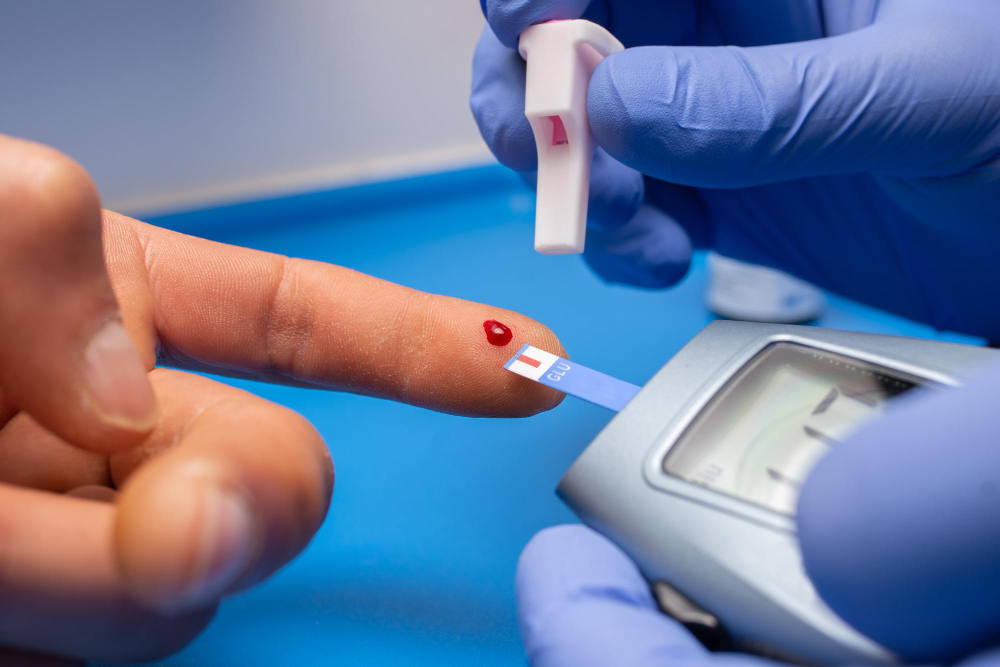Understanding your health is crucial, and one of the key aspects is knowing about your blood sugar levels. Even if you don’t have diabetes, it’s important to track your blood sugar. Why? Because early detection helps you catch any issues before they worsen. Regular blood sugar level tests can show if your body is processing sugar correctly, which is foundational for health management.
Some benefits of a sugar level test include identifying risks early, managing your diet better, and maintaining overall wellness. When you keep track of your sugar levels, you’re taking a proactive step towards controlling your health. It’s like having a GPS for your body that alerts you when something might not be right. So, even if you feel healthy, a test can ensure that you truly are.
Understanding and Preparing for Sugar Level Tests
Blood sugar may sound technical, but it’s essentially about how much sugar is in your blood. Our bodies use sugar for energy, and specific processes help regulate it. But when these processes go awry, we might experience issues like high or low blood sugar.
Who Should Consider a Blood Sugar Level Test?
- Anyone with a family history of diabetes
- Those experiencing symptoms like fatigue, excessive thirst, or unexplained weight loss
- People over the age of 45
Types of Blood Sugar Tests: 1. Fasting Blood Sugar: Taken after not eating for at least 8 hours. 2. Post-Prandial Blood Sugar (PPBS Test): Measures sugar after meals. 3. A1C Test: Provides an average level of blood sugar over the past three months. 4. Oral Glucose Tolerance Test: Usually done during pregnancy, it checks sugar processing after drinking a sugary solution. 5. Home Testing:** Involves monitoring your sugar levels using a glucose meter.
To prepare for a sugar level test, you might need to fast. This means not eating or drinking anything except water for a period before the test. Reducing anxiety can help too. Try deep breathing, listening to music, or chatting with a friend to stay calm.
Conducting and Interpreting Your Blood Sugar Level Test
Testing can be done at home or in a clinic. For at-home tests, follow these simple steps: – Clean your finger with alcohol. – Prick your finger with the lancet. – Squeeze out a drop of blood. – Place the blood on the test strip. – Insert the strip into the glucose meter to get your reading.
In a clinic, a healthcare professional will handle everything for you, typically through a blood draw. You just need to stay relaxed and trust the process.
Understanding Test Results: – Normal: Indicates good sugar metabolism. – Prediabetes: A sign to take preventive steps towards better health. – Diabetes: Need for immediate management and medical advice.
If your sugar level test results are concerning, consult your doctor immediately. Early intervention can greatly impact health outcomes and reduce future risks.
Taking Control: Lifestyle and Dietary Changes After Your Sugar Level Test
Once you’ve had your sugar level test, it’s time to focus on lifestyle. Simple changes, like regular exercise and a balanced diet, can make a big difference. Aim for at least 30 minutes of physical activity most days of the week. This helps your body use sugar more effectively.
Diet plays a huge role in maintaining healthy blood sugar. Consider these tips: – Choose whole grains over white bread. – Eat fruits and veggies with each meal. – Limit sugary drinks and snacks.
Strategies for managing blood sugar levels include: – Monitoring meals and their impact on sugar levels – Sticking to regular check-ups – Keeping stress in check as it affects sugar levels.
Remember, regular blood sugar level tests are vital. They inform you of how your body handles sugar and help guide your health choices. By adopting these proactive measures, you’re committing to a healthier lifestyle and long-term wellbeing. Embrace the journey to better health with open arms.


